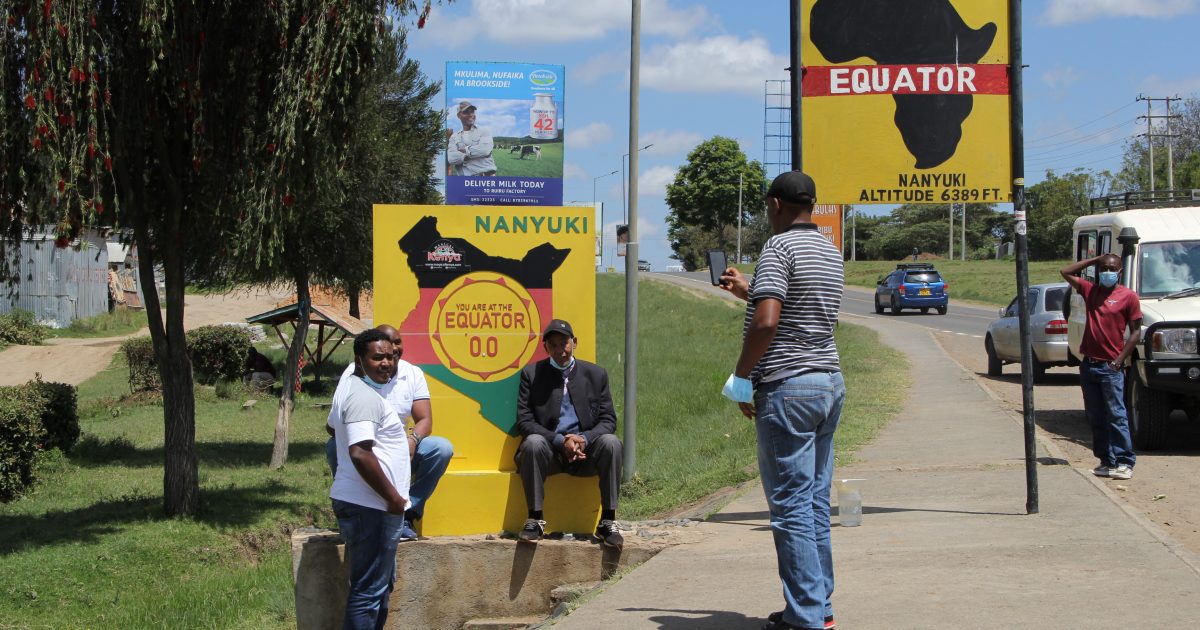On November 24, 1920, the Governor of the Colony of Kenya then declared Nanyuki a Township drawing the powers from the East Africa Township Ordinance of 1903.
“In the exercise of the powers conferred upon me, I the Governor of the colony of Kenya and East Africa Protectorate, hereby declare the area described in the schedule hereto to be a Township for the purposes of the East Africa Townships Ordinance, 1903 and to be named Nanyuki,” read the declaration in part.
The designation of Nanyuki town came as part of the Soldier Settlement Scheme that began in 1919, in an effort to increase European settlement in Kenya. The rail line reached Nanyuki in 1930 leading to the change in the district headquarters from Rumuruti to Nanyuki in 1931.
The Nanyuki 100 years’ celebrations will commence on November 24 and end on December 12 during Jamhuri Day celebrations with a myriad of activities lined up for the historic event by the County government of Laikipia keen on marketing the town not just as a tourist destination but also an investment hub.
In preparation for the historic celebrations, the County and National governments have partnered with a local environmentalist towards cleaning and removing waste from Nanyuki River that snakes through the busy town and creating the new Kirieri public recreation park along its banks.
Storm Water and Environmental Management Forum chairman Francis Thuti says residents have over the years encroached the river and cut down a myriad of indigenous trees, hence, polluting it.
President Uhuru Kenyatta’s national hygiene programme – kazi mtaani – has enhanced removal of waste from the river as well as creating the park.
Thuti narrates that his organization has been on the forefront on not only restoring the indigenous trees but also planting fruit trees along the river banks and in learning institutions.
Thuti prides himself to have entered into partnership with the National and the devolved unit in rehabilitating the major natural resource.
“In the last 100 years, we have immensely polluted our environment and dispersed many bird species along the river. But we still have a chance to redeem our conservation efforts in the forthcoming 100 years,” Thuti says.
His anticipation is that local residents will heed to his call on the essence of conserving the environment by ensuring that there is proper waste management.
“My hope is that the government will upscale its efforts in sensitising the public on the need to conserve nature. Failure to that, our future generation will be left with a very dormant town,” he adds.

Laikipia County acting Chief Officer in charge of Water, Environment and Natural Resources Evans Kamau says they have been consistent in the cleaning of the river.
Mr Kamau says they have recently been collecting over 50,000 tonnes of waste in the town, and that the department is now focusing on the recycling of the waste products.
He says the county government aims at improving in its collection and disposal of waste products to enhance cleanliness of the town.
“We have a team that works round the clock to ensure that our town is ever clean but collecting garbage in all estates and streets. We have been frequently cleaning our drainage systems. We will also introduce combustion of waste,” Mr Kamau says.
Nanyuki derives its name from the Maasai phrase “Enkare Nanyoikie” which means the river of blood. This is attributed to the red colour of Nanyuki River during rainy seasons as a result of soil erosion.
When Nanyuki was opened to Europeans in 1919 the local District Commissioner in Nyeri, correctly anticipating that the bulk of the new settlers would be too far from Nyeri to administer directly, designated government land at the junction of the Nan Yoke (sic) and Likii River as a new township.
His choice was confirmed by the Commissioner of Lands and Nanyuki was officially gazetted a township in November 1920 with boundaries giving it the same area as the city of Birmingham.
Elaborate schedules of administration and civil servants to staff the new town were also drawn up. There were so few whites in the district by 1921, however, that the only administrative presence was an African police sergeant and twenty askaris.
Governor Ndiritu Muriithi said that the recent revival of the Nairobi-Nanyuki metre gauge railway that cuts across the five Counties of Kiambu, Murang’a, Kirinyaga, Nyeri, and Laikipia that form part of the Central Region Economic Block would greatly boost the town’s economy and also that of the region that currently stands at Sh2.7 trillion (27 billion USD).
“This is a fantastic investment in this region for us to be able to increase the efficiency of our logistics for our people,” Governor Muriithi said.
Among the investors that have set base in Nanyuki town includes Shell Vivo Energy after they put up a 12 million litre capacity fuel depot that will serve Mt. Kenya region and North Eastern Kenya.
Founded in 1907 by British settlers as a small market town, Nanyuki soon grew commercially and economically. By 1930, Nanyuki’s potential justified the construction of a railway line linking the town to Nairobi.
Presently a base for the Kenya Air Force and a training area for the British Army, Nanyuki continues to be an administrative and supply centre for farms, ranches, game parks and conservancies in the region.
Nanyuki lies along the Equator, in the centre of the nation, and at an elevation of 1,947m above sea-level, is the 14th highest town in Africa.
By Martin Munyi



